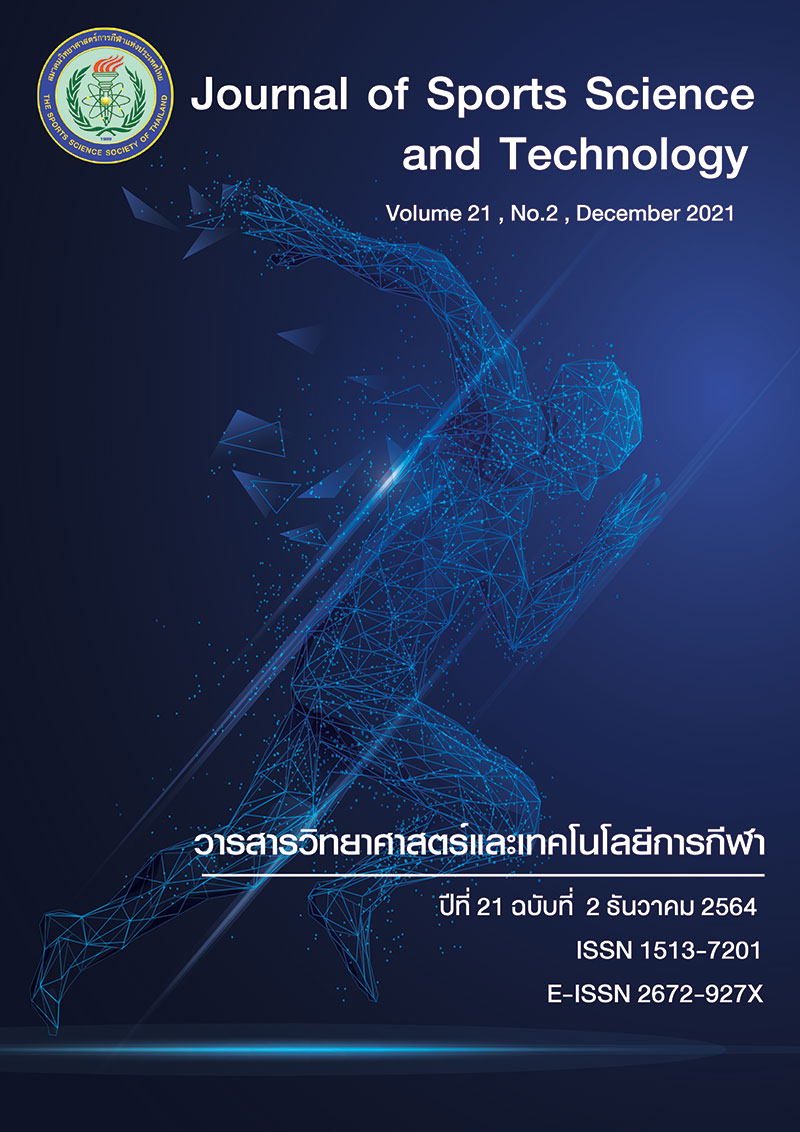THE EFFECT OF STATIC CORE MUSCLE EXERCISES ON RECOVERY AFTER HIGH-INTENSITY EXERCISE IN YOUNG HEALTHY MEN
DOI:
https://doi.org/10.14456/jsst.2021.9Keywords:
BLOOD ACIDOSIS / ACTIVE RECOVERY / VE/VCO2 RATIO /SYSTEMIC VASCULAR RESISTANCEAbstract
This study aimed to evaluate the effectiveness of static core exercises on physiological markers of recovery after Wingate test. Young healthy males (N = 11) participated in this randomized cross-over designed study. Following baseline measurements, each subject performed the 30-sec Wingate anaerobic test which was followed by a 15-min of either static core exercises (4 set of plank and side plank with 10:20 sec work/rest ratio, repeated two rounds) or passive (resting) recovery. Blood lactate was measured at baseline, immediately after, and at 15 minutes of recovery. Cardiorespiratory variables were measured at baseline, immediately after and at 5, 10, and 15 minutes of recovery. Data was analyzed with repeated measured ANOVA (2 conditions x5 times). Results showed no significant differences between recovery interventions for blood lactate levels. However, significant differences for respiratory gas exchange variables were observed. VE/VCO2 ratio was significantly higher in the passive group than that in the static core exercises at 5 and 10 min of recovery (passive = 36.77 ± 3.79, 37.10 ± 4.00, static = 32.71 ± 2.96, 32.32 ± 2.19, respectively, p < 0.05). While no difference in cardiac outputs among conditions were found, higher systemic vascular resistance in the passive group versus static group was detected at 5 min of recovery (573.17 ± 104.87, 417.68 ± 41.72 dyn.s/cm5, p < 0.05). It is likely that passive group exhibited lower blood flow and higher metabolic acidosis during recovery period. These results indicate that static core exercise exerts its positive effects via respiratory and metabolic variables and somehow involves with cardiac function. Thus, the active recovery methods, via static core exercises, could potentially be applied for a brief intense exercise.
(Journal of Sports Science and Technology 2021; 21 (2):26-43)
(Received: 3 August 2021 , Revised: 7 December 2021, Accepted: 8 December 2021 2021)
Keywords: BLOOD ACIDOSIS / ACTIVE RECOVERY / VE/VCO2 RATIO / SYSTEMIC VASCULAR RESISTANCE
* Corresponding author: Suchada Saovieng, PhD. College of Sports Science and Technology, Mahidol University Salaya, Phutthamonthon, Nakhonpathom, 73170, THAILAND Email: mook.suchadasaovieng@gmail.com






